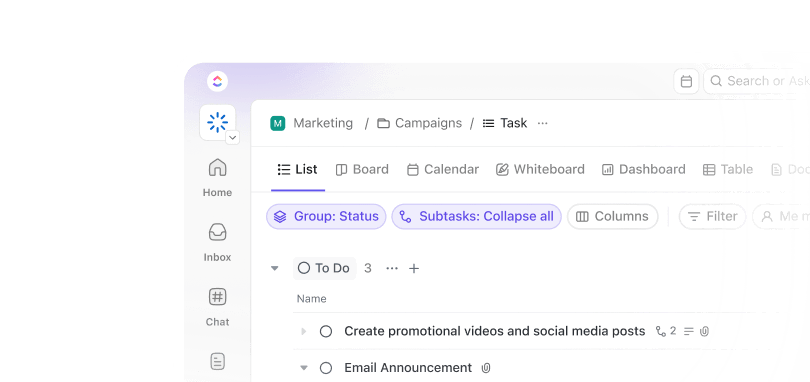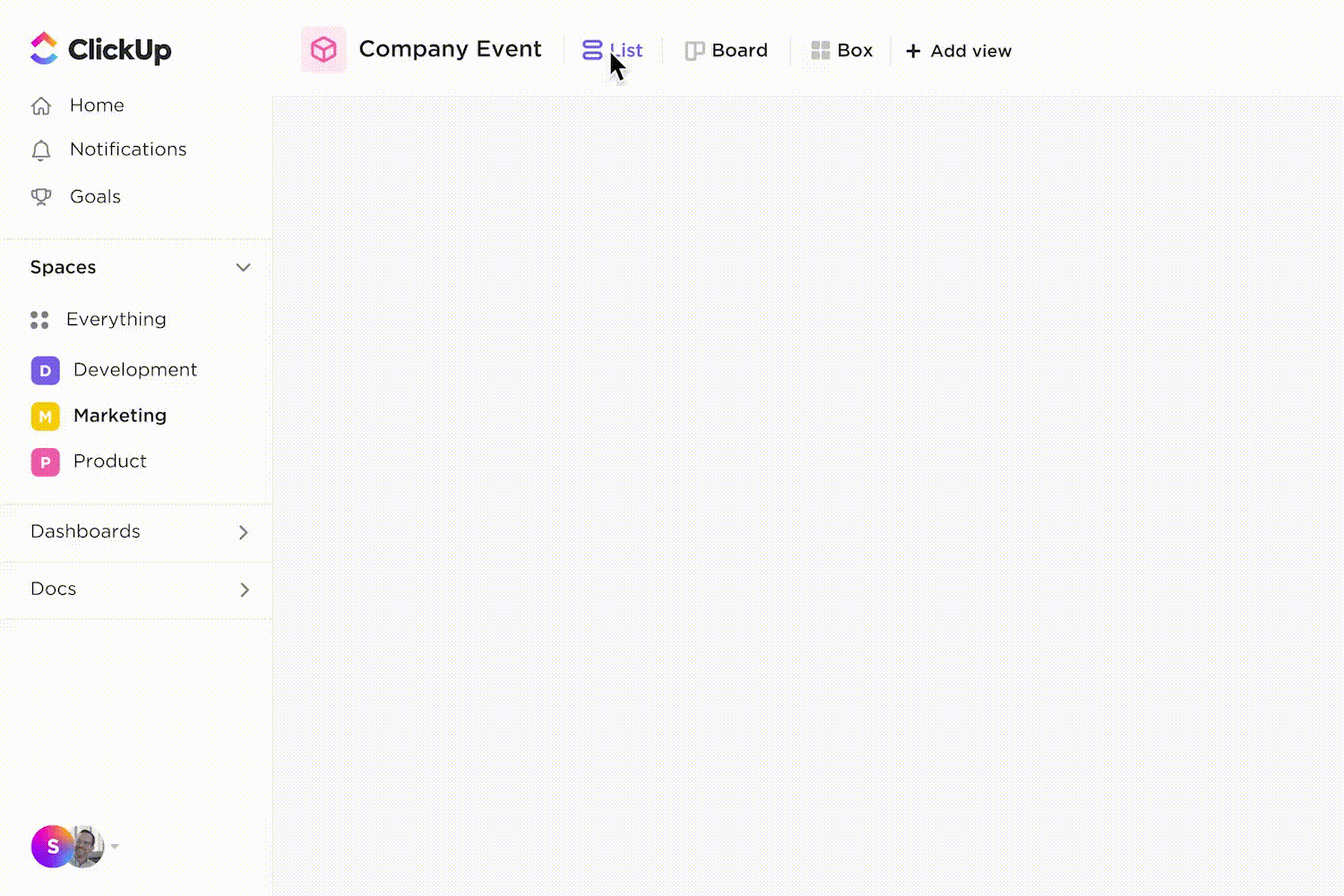Building a successful business requires meticulous planning, goal setting, project management, and keeping investors happy—agreed. Yet some of the most successful leaders are the ones who fail, fail again, and still refuse to quit.
In 1889, Henry Ford left a stable job to start a business with $150,000 in investor money—only to fail. Twice. Any reasonable person might have cut their losses, but Ford tried once more. He founded the Ford Motor Company in 1903, and, well, we all know how that turned out.
Walt Disney, Oprah Winfrey, Michael Jordan—the list of relentless high achievers goes on. Their stories share a common theme: intrinsic motivation—the personal satisfaction of proving something, of pushing forward until success isn’t just a goal but an inevitability.
Intrinsic motivation isn’t just for billionaires and cultural icons—it applies to us all. However, our challenge is turning that human motivation into meaningful action.
Let’s break down some intrinsic motivation examples and see how to make this powerful force work in our favor.
⏰ 60-Second Summary
Here’s a quick breakdown of the article to help you understand and promote intrinsic motivation in your life:
- Intrinsic motivation refers to the internal drive to do something for personal satisfaction, unlike extrinsic motivation, which relies on external motivation or rewards like money or recognition
- According to Maslow’s hierarchy of needs, people eventually shift from basic psychological goals like focusing on survival to pursuing personal fulfillment and growth
- People perform better when they are intrinsically motivated
- Students learn better when they are genuinely interested in a subject rather than just studying to pass an exam
- Employees are more engaged when they take on new challenges for personal growth rather than for obvious external rewards like promotions or praise
- Individuals sustain habits like exercising, volunteering, or reading when they find them fulfilling rather than chasing external rewards
- Hobbies and creative pursuits like painting or playing an instrument become more enjoyable when done for passion rather than extrinsic motivating factors like financial gain
- To maintain motivation, people need to set goals that align with their interests, track progress to see measurable improvements, and structure their work or routines in a way that gives them control over how they complete tasks
- helps turn intrinsic motivation into structured action by breaking down goals into manageable steps, keeping motivation consistent
15 Intrinsic Motivation Examples: Real-Life Scenarios That Drive Success
What is Intrinsic Motivation?
There’s a famous saying: “Money can’t buy happiness.”
That’s true—but it does buy time, comfort, and the position to chase things you’re passionate about. That’s where intrinsic and extrinsic motivation strikes a balance.
To put it simply:
📌 Extrinsic motivation
- Do the task to earn an external reward
- Making money, avoiding punishment, seeking approval
📌 Intrinsic motivation
- Do the task because you genuinely enjoy it
- Drawing, journaling, learning an instrument
Most people work to pay the bills, but we’ve all heard stories of individuals who “have it all” yet feel unfulfilled. As one person quoted in The Guardian put it:
External rewards keep life running—food on the table, kids in school, that occasional dinner at a lovely restaurant. However, intrinsic motivation is what makes life meaningful.
Psychologist Abraham Maslow described this shift in priorities in his Hierarchy of Needs theory. At first, people focus on extrinsic motivators—basic needs like food, shelter, and security. But once those are met, motivation evolves.
Maslow referred to this as growth motivation, in which individuals prioritize internal motivation—seeking personal satisfaction, self-improvement, and meaningful goals.
Think of it this way: extrinsic rewards keep us afloat, but intrinsic motivation is what propels us forward.
📮 Insight: Almost all your employees can’t make informed decisions.
92% of knowledge workers risk losing crucial decisions buried in chat, email, and spreadsheets. Without a centralized system, key business insights vanish in the digital clutter. ’s Task Management ensures nothing is missed—instantly turn chats, comments, docs, and emails into actionable tasks with just one click!
Examples of Intrinsic Motivation in Different Areas
Intrinsic motivation in education
✅ Example #1: Studying a subject of interest
- Extrinsic motivation: A student memorizes history facts just to pass an exam and avoid failing
- Example of intrinsic motivation: A student reads about ancient civilizations because history fascinates them, and they love learning about the past
✅ Example #2: Learning a new language
- Extrinsic motivation: Someone studies French because their job requires it for a promotion
- Example of intrinsic motivation: Someone learns French because they enjoy exploring new cultures and find speaking different languages fun
✅ Example #3: Participating in class discussions
- Extrinsic motivation: A student contributes to class discussions to impress the teacher and get participation points
- Example of intrinsic motivation: A student eagerly joins discussions because they enjoy exchanging ideas and debating topics
⚡ Get Ahead: Great teams thrive on motivation and collaboration! These 105 inspirational teamwork quotes will motivate your team, spark a connection, boost morale, and create a culture of success.
✅ Example #4: Completing homework assignments
- Extrinsic motivation: A student finishes homework only to avoid detention or get a good grade
- Example of intrinsic motivation: A student completes homework because they genuinely enjoy learning and problem-solving
Intrinsic motivation in the workplace
✅ Example #5: Taking on more responsibilities
- Extrinsic motivation: An employee volunteers for extra tasks solely to get noticed for a promotion or reward programs
- Example of intrinsic motivation: An employee takes on additional responsibilities because they love problem-solving and professional growth
✅ Example #6: Pursuing professional development
- Extrinsic motivation: Someone attends a training program because their company requires certification
- Example of intrinsic motivation: Someone takes an online course because they love learning new skills and expanding their expertise
✅ Example #7: Helping a colleague
- Extrinsic motivation: An employee helps a coworker just to impress the manager
- Example of intrinsic motivation: An employee assists a coworker because they enjoy teamwork and collaboration
💡 Pro Tip: Struggling to boost workplace efficiency? 10 factors affecting productivity at work reveal how leadership, communication, and the right tools—like —can transform team performance.
✅ Example #8: Innovating at work
- Extrinsic motivation: A manager implements new ideas just to impress upper management
- Example of intrinsic motivation: A manager experiments with creative solutions because they genuinely enjoy optimizing workflows and solving problems
Intrinsic motivation in personal growth
✅ Example #9: Exercising regularly
- Extrinsic motivation: Someone works out only to lose weight for an upcoming event
- Example of intrinsic motivation: Someone exercises because they love feeling strong, balanced, and energized
✅ Example #10: Volunteering
- Extrinsic motivation: A person volunteers at a local shelter just to add it to their resume
- Example of intrinsic motivation: A person volunteers because they find it personally fulfilling to help others
✅ Example #11: Reading for enjoyment
- Extrinsic motivation: Someone reads a book because they need to write a report on it
- Example of intrinsic motivation: Someone reads for pure enjoyment, getting lost in the story and appreciating the writing
🧠 Did You Know: Staying motivated every day can feel exhausting, but the right inspiration is just a play button away. These top motivational podcasts for personal growth and career development will help you stay inspired.
✅ Example #12: Practicing mindfulness
- Extrinsic motivation: A person meditates because their doctor advised them to reduce stress
- Example of intrinsic motivation: A person practices meditation because they enjoy the sense of peace and self-awareness it brings
Intrinsic motivation in hobbies and creativity
✅ Example #13: Painting for fun
- Extrinsic motivation: An artist paints solely to sell their work for profit
- Example of intrinsic motivation: An artist paints because they feel happy and relaxed while creating art
✅ Example #14: Playing an instrument
- Extrinsic motivation: A child practices piano just to win a music competition
- Example of intrinsic motivation: A musician plays the piano because they love the sound and enjoy improving their skills
✅ Example #15: Writing for pleasure
- Extrinsic motivation: Extrinsically motivated individuals write blog posts just to gain followers and monetize their content
- Example of intrinsic motivation: Intrinsically motivated individuals write because they love storytelling and find it personally rewarding
How to Cultivate Intrinsic Motivation
Extrinsic motivation has one major flaw: burnout.
For example, if your primary drive is out-earning a colleague, you’ll always feel the need to chase higher paychecks—even when you “win.” The result? Exhaustion, stress, and a lack of genuine fulfillment.
🧠 Did You Know: Intrinsic motivation contributes to 45% of employee performance variance, while motivation based on personal values adds another 22%. This means that enjoyment and values drive workplace success and well-being.
To avoid burnout and lack of fulfillment, here are some ways to cultivate intrinsic motivation:
- Take on tasks that interest you to balance boring and exciting work
- Work reasonable hours—going overboard hurts productivity and mental health
- Use an everything app for work like to structure workflows and bring clarity to your routine
Prioritize meaningful work
combines task management, goal tracking, and collaboration features into a single platform and helps you ace your productivity goals every day.
Let’s start with Goals. It helps you visualize progress, breaking large projects into manageable milestones. This breakdown facilitates a step-by-step approach to achieving the overall objective.

A game changer for achieving those milestones? Tasks! Use it to break down the goals into smaller tasks, sub-tasks, and checklists, making it easier to stay on track. The psychological advantage of structured tasks, when paired with clear goals, fuels consistency and provides concrete evidence of progress, whether you’re learning, creating, or collaborating across projects.


For instance, in the context of an OKR goal setting, you can use it to:
✅ Create a top-level goal
✅ Break it into subgoals (Objectives)
✅ Set measurable Key Results


Structure your workflow for autonomy
Intrinsic motivation thrives on autonomy. The ability to design your own workflow gives a sense of ownership over your tasks, making work feel personally satisfying rather than just another obligation.
’s Task Types, Custom Fields, and Multiple Lists help users create workflows that fit their unique style. Plus, there are 15 plus custom views in to visualize work your way.


Track progress to stay motivated
Tracking progress is another essential driver of intrinsic motivation. With goal tracking apps, people see improvement over time. This fuels their self-determination and sense of personal satisfaction.
Dashboards make this possible by providing clear visibility into completed tasks and ongoing progress. The more people see their work leading to tangible results, the more they enjoy the process itself.


Meanwhile, Automations eliminates repetitive manual tasks, helping users stay in flow and maintain deep work.
📌 Example: A marketing team automates task assignments and deadline reminders in , eliminating repetitive admin work and allowing team members to focus on creative, meaningful tasks.
Improve team motivation with collaboration tools
A great real-world example of how structure fuels motivation is seen in team collaboration. When everyone knows exactly what they need to do, and there’s a clear system in place, intrinsic motivation naturally increases.
’s Assign Comments get rid of micromanagement by making sure that action items don’t get lost in long email chains and keeping task ownership crystal clear.
🧠 Did You Know: The most successful teams aren’t micromanaged—they’re empowered. These team empowerment strategies for improved performance show you how to inspire accountability and create a team that thrives on independence!
The same applies to @mentions in . Teams can engage instantly instead of waiting for updates, discuss projects directly within tasks, and keep everything moving. If you need to chat in real-time or hop on a video call, Chat lets you collaborate within the same platform. No more toggling between tools!
If you’re looking to measure and refine your intrinsic motivation, ’s Personal Productivity Report Template is a great tool. It tracks the time spent on different tasks, helping individuals identify areas for improvement and maximize efficiency.
Chick-fil-A 🤝
Time saved is another motivator for your employees. However, Chick-fil-A was struggling in this department.
🚩 Challenge: Chick-fil-A’s teams used multiple systems—from notebooks to spreadsheets—to manage onboarding, learning, and employee scheduling. This led to unproductive hours, excessive meetings, and inefficiencies.
✅ Solution: By implementing Folders, Lists, and Tasks, Chick-fil-A centralized its employee management system, streamlining onboarding, scheduling, and training across multiple restaurants.
To-Do to Ta-Da: Intrinsic Drive Meets
You’ve already seen what Chick-fil-A’s Ryan Lamb had to say about , but his words sum up the experience perfectly:
“ allows my leadership team to focus more on strategic tasks rather than being bogged down by administrative duties. It’s helped us reduce overhead and consolidate the work that took 9 people to 6.”
Here’s why works: It keeps tasks organized, tracks progress effortlessly, and automates the boring stuff. No more scattered notes, missed deadlines, or endless status meetings—just a smarter way to work towards your goals.
Ready to turn motivation into action? Sign up on for free now!


Everything you need to stay organized and get work done.













